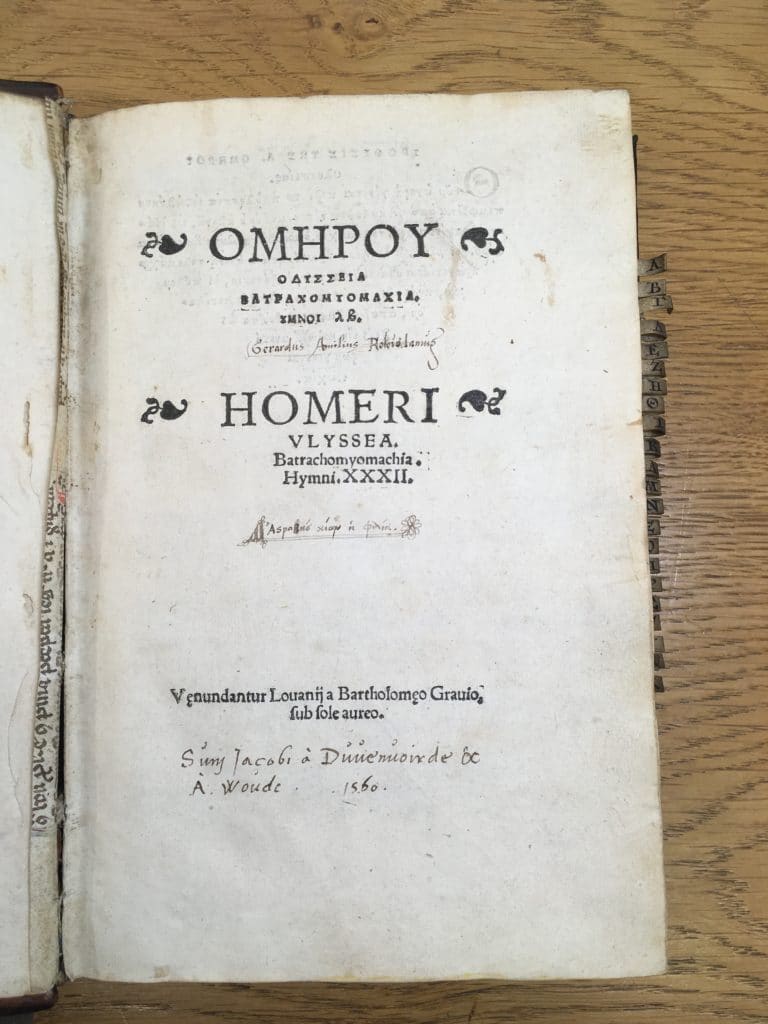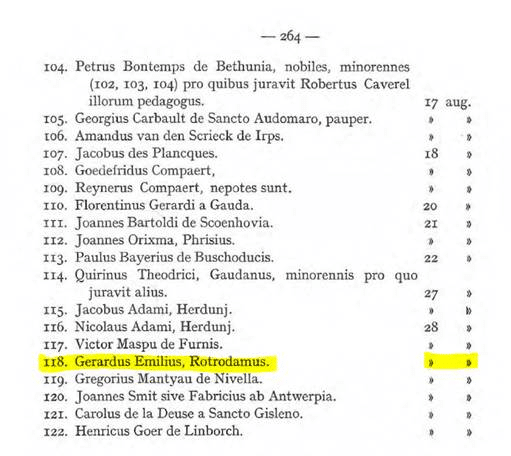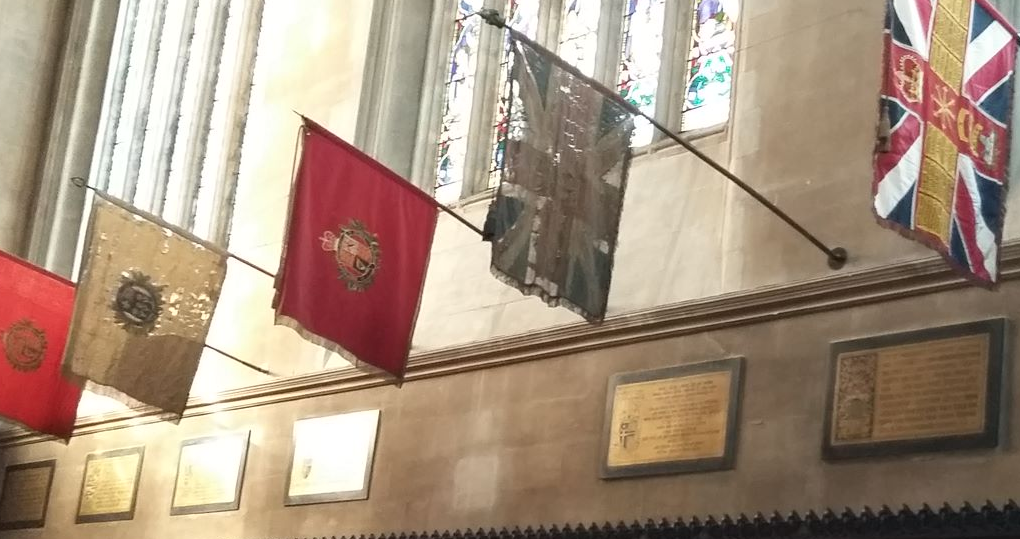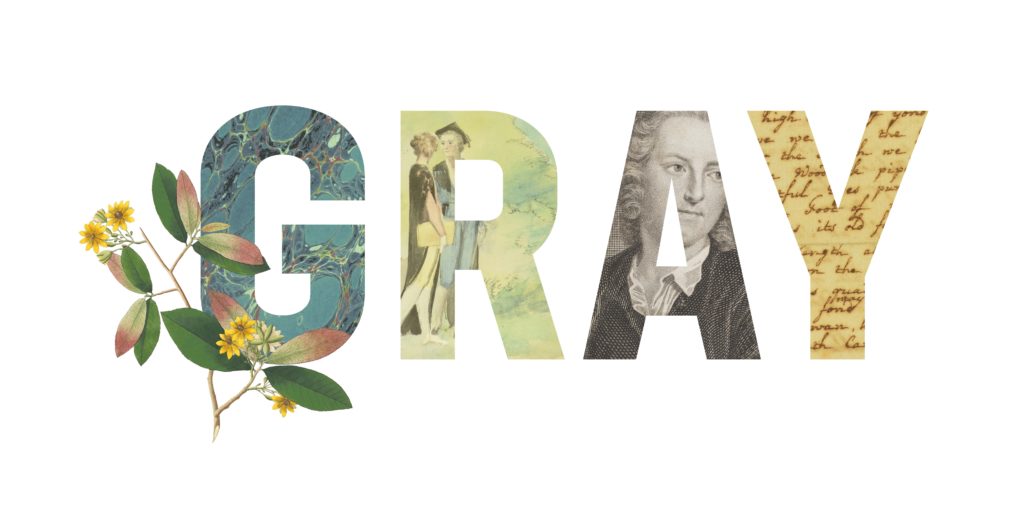Publishing posts on Twitter is part of the College Library social media strategy to increase awareness and promote visibility of the collection. In the last few years, libraries and heritage institutions have increasingly adopted this tool for quickly sharing images, comments and links. However, its potential goes beyond this. By gathering together scholars from all over the world, Twitter can be a very powerful tool for research.
A few days ago we posted on the College Library Twitter account (@EtonCollLibrary) two images of our 1535 copy of the Odyssey printed in Louvain by Barthélemy de Grave (d. 1578) at the expenses of Rutgerus Rescius (d. 1545) (ECL: Fa.4.13).
This is a heavily annotated book with a precious 16th-century brown panelled binding decorated with gorgeous acorn stamps and blind-rolled allegorical figures on its boards.
The extensive manuscript notes throughout the text and the elaborate binding quickly intrigued our followers. Among these, the Assistant Professor Natasha Constantinidou (@ConstantinidouN) pointed out a very similar copy Leiden University Library has, heavily annotated and with a rich blind-decorated binding (Special Collections (KL) 756 C 5).
Picking up the thread, the Research Fellow Raf Van Rooy (@boomloos, Orcid) observed that the sets of college notes in the items at Eton and Leiden were possibly both taken during Rutger Rescius’ 1543 Odyssey course in Louvain.
He explained that it’s not unlikely that the two books reflected parallel notes to the ones contained in a copy preserved in Ghent (Ghent University Library, BIB.CL.000451). We know for sure that the Ghent ones were taken during Rescius’ 1543 Odyssey courses, and the similarity with the annotations in the Eton and Leiden copies suggests that they were also taken during the same course or perhaps another one taught by Rescius at a different time. (More details on the Ghent copies here.)
At that point we knew there were three heavily annotated copies of the 1535 Odyssey at Eton, Leiden and Ghent. Other copies with annotations can also be found at the National Library of the Netherlands (NL / Tresoar / BUMA In: 35) and the Bodleian Library (4° Rawl. 548 – Weston Stack). Were all these books annotated by students in the same period? Does the material evidence corroborate this hypothesis?
Let’s examine our copy of the 1535 Odyssey more closely. Xander Feys, a PhD candidate at Louvain who has been studying our Eton copy, kindly shared the preliminary results of his research with us. He believes the first owner of our item was probably the student Gerardus Aemilius Roterodamus (from Rotterdam) who recorded his name on the title page as well as the motto Ἀστραβής κίων ἡ φιλία (‘Friendship is a steadfast pillar’), perhaps alluding to Pindar (Olympian 2.82).

Feys discovered the entry for ‘Gerardus Emilius, Rotrodamus’, dated 28 August 1543 – about two months before Rescius started lecturing on the text – in the enrolment lists of the Old University of Louvain (A. Schillings (1961), Matricule de l’université de Louvain, vol. 4, p. 264, no. 118). Assuming that Aemilius enrolled in Louvain at the Artes Faculty when he was 12 or 13 as was usual, he was probably born around 1530.

According to Feys, the annotations in our copy must have been written by Gerardus while studying in Louvain. The majority of these notes are translations, paraphrases, explanations of grammatical issues, or else references to other Greek and Latin works. Many verbatim similarities could be found in the notes taken by another student in the Ghent copy. Probably the most relevant evidence that Gerardus attended Rescius’ course on the Odyssey is a note on fol. A.iijr (right margin, near the top of the page) where Gerardus mentions Rescius by name!

More on these annotations will be presented by Feys at the RSA Conference 2021. We’re looking forward to learning more from Feys about Gerardus, but meanwhile let’s return to our copy to identify the second owner of the book who wrote his name at the bottom of the title page. A PhD Candidate at the University of Pennsylvania, Natale Vacalebre (@PhdNatale), was the fastest of our followers to solve the enigma: “Sum Jacobi à Duvenvoorde & à Woude 1560”, as the inscription reads, refers to Jacob van Duvenvoorde (1509-1577), Lord of Warmond, Woude and Alkemade. The verb ‘Sum’ refers to the book, followed by the genitive form of the name Jacob, so the inscription translates: “I am (the property) of Jacob…”. Another follower (@MMFCbe), more familiar with Dutch names explained that the grave accent on the letter ‘à’ indicates the preposition ‘a/ab’ in humanistic Latin, which should be read ‘van’ (‘de’ in medieval Latin).

Other researchers, curators and scholars confirmed our reading and added more information. Thanks to them all, we know that Jacob was the son of Johan van Wassenaer van Duvenvoorde and Maria van Mathenesse, and inherited the title lord of Woude from his mother. He was born in De Haag (The Netherlands), and he was a member of a Dutch noble family who probably had a good library. For example, a very similar inscription probably left by one of his descendants, Jan van Duvenvoorde (1547-1610), is at the Linda Hall Library in Kansas City.
The odyssey of our copy continued after it left the Duvenvoorde library. Possibly between the end of the 17th century and the beginning of the 18th century, the book travelled to England and ended up in the library of John Reynolds (1671-1758), a fellow of Eton and Head Master of Exeter school, who decided to donate the copy to Eton College Library in 1751. Almost 300 years later the College Library still preserves this valuable book.
More research could shed further light on our copy and its connections with the other annotated copies, but so far we are extremely grateful to all the followers and researchers who got in touch via Twitter or by email to tell us intriguing details on the provenance history of our copy. The results of all these interactions are now visible in our updated catalogue record.
Let’s just say that with our 1535 Odyssey, Twitter has done its magic!
By Laura Carnelos, Library Curator



